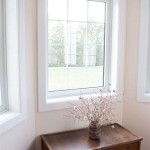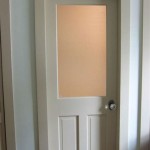How Do You Know Your Interior Design Style?
Navigating the world of interior design can be overwhelming, especially when faced with a vast array of trends, aesthetics, and personal preferences. Understanding your own interior design style is crucial for creating a space that reflects your personality, inspires you, and feels truly yours. While it might seem daunting, discovering your style is a journey of self-discovery, and it can be a lot of fun. This article will guide you through the process, providing practical steps and helpful tips to help you define and embrace your unique design aesthetic.
Step 1: Introspection and Inspiration
The first step in determining your interior design style is to delve into your own aesthetic preferences. This involves introspection, reflection, and identifying what truly resonates with you. Consider the following questions to spark your exploration:
- What emotions do you want your home to evoke? Do you desire a calm and serene environment, a vibrant and playful atmosphere, or something in between?
- What are your favorite colors, textures, and materials? Are you drawn to natural elements, bold geometric patterns, or vintage pieces?
- What design elements do you find appealing? Do you gravitate towards minimalist aesthetics, eclectic mixes, or traditional details?
- Who are your favorite designers or architects? Their work can provide valuable insights into your stylistic leanings.
- What are your favorite places to visit or spend time in? Think about hotels, restaurants, or even shops that you find particularly inspiring.
Once you've identified these initial preferences, start gathering inspiration. Create a mood board or a Pinterest board filled with images that captivate you. This visual representation will help you see common threads emerging in your selections. Be mindful of the overall mood and atmosphere you're trying to create.
Step 2: Exploring Design Styles
Now that you have a clearer understanding of your personal preferences, it's time to explore the vast world of interior design styles. Familiarize yourself with popular categories and their defining characteristics. Here are a few examples to get you started:
- Modern: Characterized by clean lines, minimal ornamentation, and a focus on functionality. Often features neutral colors, natural materials, and an abundance of light.
- Contemporary: Similar to modern, but with a focus on current trends and a more eclectic feel. Open to a variety of materials, colors, and textures.
- Scandinavian: Known for its simplicity, lightness, and natural elements. Emphasizes functionality, natural light, and a minimalist aesthetic.
- Bohemian: Celebrates eclecticism and layers. Often incorporates global influences, vibrant colors, and a mix of textures.
- Industrial: Inspired by factories and warehouses. Features exposed brick, metal accents, and a raw aesthetic.
As you research different styles, note which elements resonate most with you. Observe the color palettes, furniture choices, and overall ambiance associated with each style. This will help you categorize your own preferences and narrow down your options.
Step 3: Refining Your Choices
With a better understanding of various design styles and your personal preferences, you can begin to refine your choices. Consider the following factors:
- Your lifestyle: If you enjoy entertaining, your style might lean towards welcoming and spacious arrangements. If you value privacy and tranquility, a more minimalist aesthetic might be preferable.
- The size and layout of your space: Styles that work well in a large open-plan space may not translate as effectively in a smaller, more intimate setting.
- Your budget: Be realistic about the cost of implementing a particular style. Some styles might necessitate more expensive materials or custom pieces.
It's also helpful to create a style board or mood board that reflects your refined choices. This board should showcase a cohesive vision of your space, including color palettes, furniture styles, and potential decor items. Remember, your design style is a personal journey, so don't be afraid to experiment, mix and match, and evolve your aesthetic over time.
Ultimately, the key to defining your interior design style is to trust your instincts and create a space that feels authentically yours. There are no rules, and your style should be a reflection of your personality, aspirations, and the life you want to live.

How To Choose An Interior Design Style The Beauty Revival

Dear Urbaneer How Do We Establish Our Interior Design Style

How To Figure Out What S My Design Style Worthing Court

Find Your Interior Design Style Quiz Southern Motion

What S Your Interior Design Style

How To Find Your Unique Personal Interior Design Style Dwell Beautiful

What Does Your Interior Design Style Say About You

What S Your Design Style Home Interior Styles Quiz Decor

How To Choose An Interior Design Style The Beauty Revival

Why Is It Important To Determine Your Design Style Cristina Isabel
Related Posts








